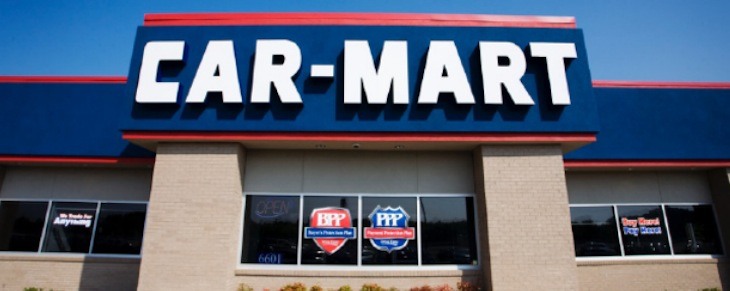Higher interest rates may boost business for used car dealers like Car-Mart
by October 5, 2017 5:55 pm 447 views

The new normal for interest rates might not be the old normal, or what they were before the Great Recession, economist Michael Pakko said. Buy here, pay here used car dealerships such as Bentonville-based America’s Car-Mart might see a rise in business if interest rates were to return to the level they were before the recession.
But whether they return to those levels is uncertain and not expected to happen if one follows projections of the policymakers for the federal funds rate.
“I personally don’t see interest rates getting back to pre-crisis levels any time soon,” said Jeff Williams, president and chief financial officer for Car-Mart. “Higher interest rates can be good for us as the cost of funds for competitive offerings is higher and thus our offering is more competitive in the market.”
In May 2016, the company increased its interest rate to 16.5%, from 15%. At the end of fiscal 2016, Car-Mart was facing shrinking profit margins that had fallen to 38.7%, and the goal was to raise profit margins to more than 40%. In the first quarter of fiscal 2018, which ended July 31, profit margins fell slightly to 41.4%, from 41.8% in the same quarter of the previous fiscal year.
In September, the Federal Open Market Committee, which sets monetary policy, released its forecast for the federal funds rate, based on current economic conditions. The federal funds rate, or the rate banks charge each other for overnight loans, is used to determine the interest rate one would receive on a loan. In June, the Fed increased the rate to a range of 1% to 1.25%.
The Fed sets monetary policy to mitigate inflation changes from its long-term goal of 2% and to achieve maximum employment, according to the Federal Reserve. It doesn’t have a fixed goal for maximum employment, but members of the Federal Open Market Committee estimated the normal rate of unemployment to be between 4.4% and 5%.
By 2020, the Fed expects the federal funds rate to be between 1.1% and 3.9%, and the median rate should be 2.9%. And in the longer run, the rate is expected to range between 2.3% and 3.5%, and the median rate is expected to be 2.8%. Pakko, chief economist and state economic forecaster for the Arkansas Economic Development Institute at the University of Arkansas at Little Rock, agreed with the Fed’s projections, saying it’s the “authority” on the rate.
“To see rates come back up to the new normal would be reassuring,” Pakko said. “I think it is good news to go back up to normal.”
Before the Great Recession in mid-2006, the rate had reached a peak of 5.25%. Before the recession in 2001, the federal funds rate was more than 6%, Pakko said. Between 1995 and 2000, the rate was more than 5%.
But the rate was higher because the inflation rate was higher then. In times of high inflation, the rate is increased, Pakko said. When the economy is more stable and the inflation rate is low, the interest rates remain low. The inflation rate has been about 1.5% for the past few years. However, if economic conditions change, this could lead the Federal Open Market Committee to adjust its forecast for the federal funds rate. “Much is expected to take place in 2018,” Pakko said.
On Dec. 31, Williams will assume the role of CEO of Car-Mart, and CEO William “Hank” Henderson will retire. Henderson, who has worked for the company for more than 30 years, announced his retirement in the first-quarter earnings report Aug. 17. When he retires, Henderson will move to CEO emeritus and board member and serve as adviser to Williams and senior management.
Shares of Car-Mart (NASDAQ: CRMT) closed Thursday at $41.90, down 60 cents. In the past 52 weeks, the stock has ranged between $47.75 and $30.20.
